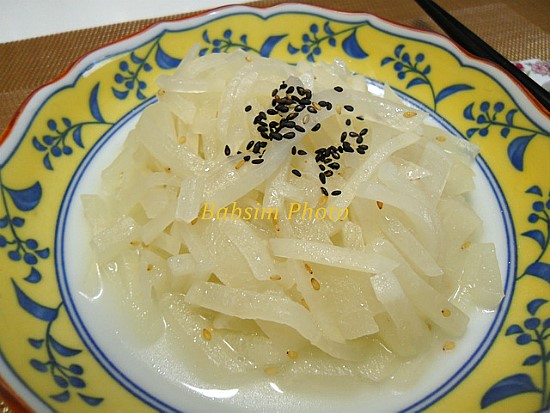
radish greens
It's a sweeter and more delicious radish in season! Because of its sweet taste, it is a very delicious radish with just the basic seasoning. It's crunchy, but it's moist and light inside, so it's not too much. It's a side dish that tastes good and is healthy.
2 serving
Within 30 minutes

밥심은국력
- Ingredients
-
-
Radish1/3ea
-
Water300ml
-
grape seed oil1TS
-
Salt2ts
-
Sesame1ts
-
black sesamelittle
-
- Cooking Steps
-
STEP 1/14Wash radishes thoroughly to remove moisture. At this time, it's better to use it as it is without removing the skin, but the radish withered and removed the skin with a filler.
 STEP 2/14Slice the radish. When cooking cooked radish greens (Sukchae), cut radish too thinly, so keep in mind that the radish may break during cooking. And if it's a sukchae, you should use the white part of the radish, and it's delicious to use the blue part of the radish when you use raw vegetables.
STEP 2/14Slice the radish. When cooking cooked radish greens (Sukchae), cut radish too thinly, so keep in mind that the radish may break during cooking. And if it's a sukchae, you should use the white part of the radish, and it's delicious to use the blue part of the radish when you use raw vegetables.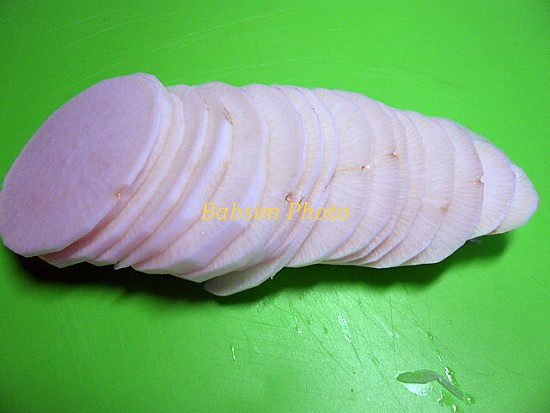 STEP 3/14Slice the radish.
STEP 3/14Slice the radish. STEP 4/14If you use a coating pot, it doesn't stick when you stir-fry it, so it's comfortable. It's a ceramic pot that's popular these days. If you use this pot, it doesn't stick like a frying pan, so it's good for stir-frying. I'll heat the pot first. That way, the oil doesn't burn
STEP 4/14If you use a coating pot, it doesn't stick when you stir-fry it, so it's comfortable. It's a ceramic pot that's popular these days. If you use this pot, it doesn't stick like a frying pan, so it's good for stir-frying. I'll heat the pot first. That way, the oil doesn't burn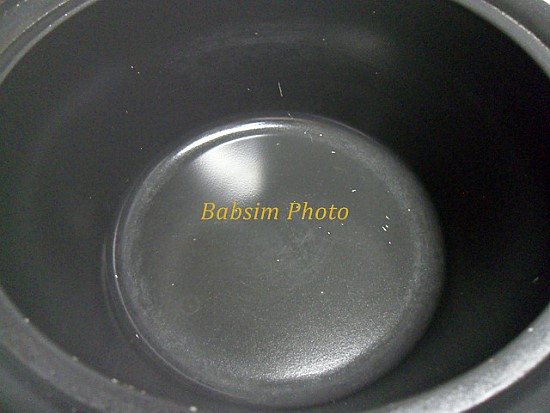 STEP 5/14Add 1 tablespoon grape seed oil. It doesn't stick, so you don't need a lot of oil doesn't need much.
STEP 5/14Add 1 tablespoon grape seed oil. It doesn't stick, so you don't need a lot of oil doesn't need much.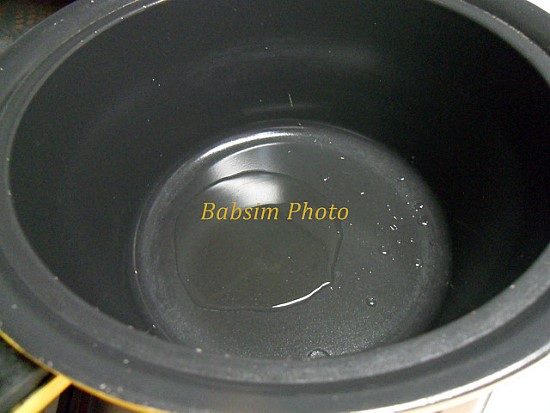 STEP 6/14Stir-fry the radish.
STEP 6/14Stir-fry the radish. STEP 7/14Mix it evenly and stir-fry it
STEP 7/14Mix it evenly and stir-fry it STEP 8/14As the radish is fried, it starts to lose its breath, and water starts to come out from the moisture from the radish. Stir-fry it evenly so that it doesn't burn on high heat.
STEP 8/14As the radish is fried, it starts to lose its breath, and water starts to come out from the moisture from the radish. Stir-fry it evenly so that it doesn't burn on high heat.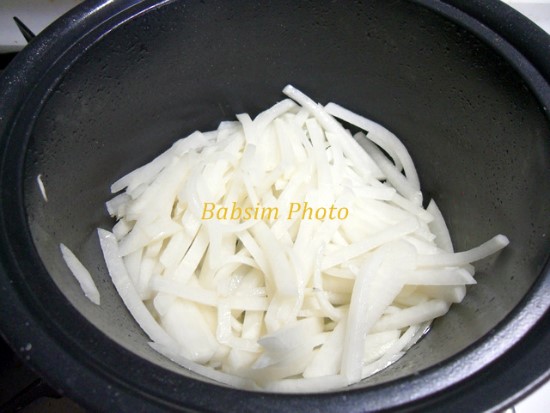 STEP 9/14Pour 300ml of rice water. You can use the second or third water after washing the rice.
STEP 9/14Pour 300ml of rice water. You can use the second or third water after washing the rice.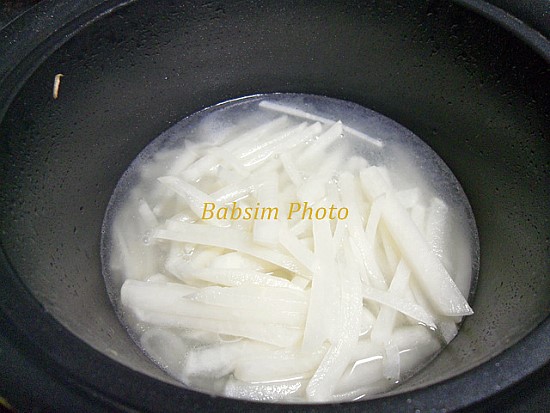 STEP 10/14Add 2 teaspoons of salt, first add only 1 teaspoon, and then add the remaining 1 teaspoon when it's almost done. That way, you can prevent it from being squeezed at once. The amount of salt can also vary depending on the degree to which the rice water is boiled down.
STEP 10/14Add 2 teaspoons of salt, first add only 1 teaspoon, and then add the remaining 1 teaspoon when it's almost done. That way, you can prevent it from being squeezed at once. The amount of salt can also vary depending on the degree to which the rice water is boiled down.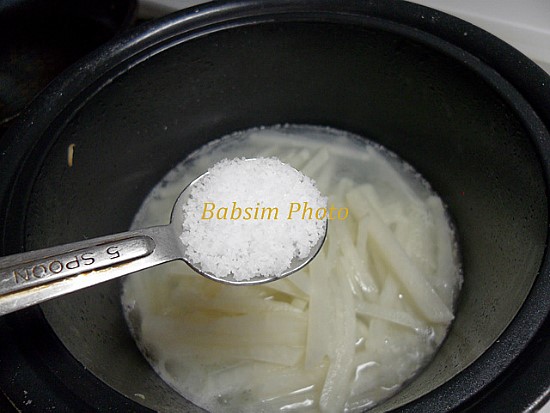 STEP 11/14Reduce the heat when the rice water starts to boil.
STEP 11/14Reduce the heat when the rice water starts to boil.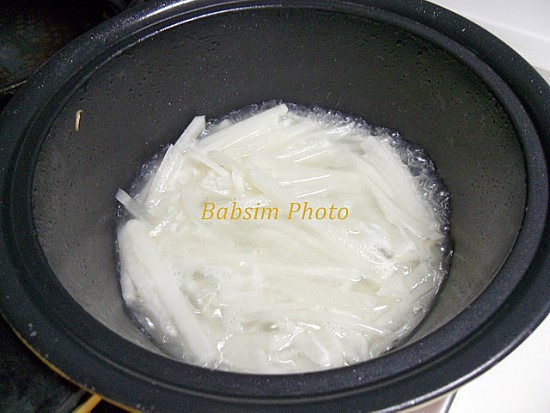 STEP 12/14Cover and cook over low heat for about 20 minutes.
STEP 12/14Cover and cook over low heat for about 20 minutes. STEP 13/14It tastes better when there's a little soup on the bottom of the pot. It's enough to have 1-2cm of soup left.
STEP 13/14It tastes better when there's a little soup on the bottom of the pot. It's enough to have 1-2cm of soup left. STEP 14/14I'll sprinkle a little bit of sesame.
STEP 14/14I'll sprinkle a little bit of sesame.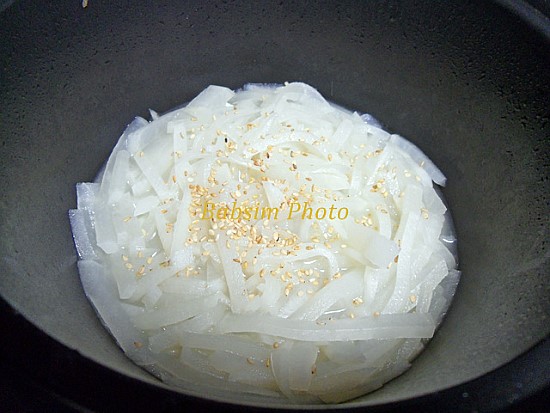
- Cooking review
-
5.00score
-
 418*****scoreWow. She was a daughter who was always treated at home While living alone, I looked at the recipe and copied it! It's so delicious. It's the same taste as I used to eat at home2023-05-31 14:26
418*****scoreWow. She was a daughter who was always treated at home While living alone, I looked at the recipe and copied it! It's so delicious. It's the same taste as I used to eat at home2023-05-31 14:26
-
- chicken Recommended recipe
-
-
1
 Chicken breast chicken (cold pop)5.00(15)
Chicken breast chicken (cold pop)5.00(15) -
2
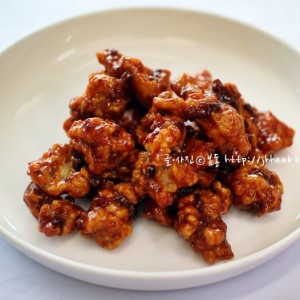 Seasoned chicken. Making seasoned chicken sauce4.67(6)
Seasoned chicken. Making seasoned chicken sauce4.67(6) -
3
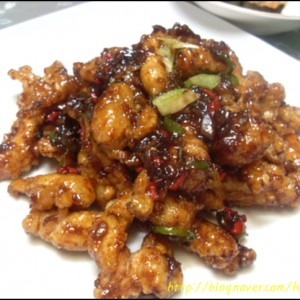 boneless Kyochon chicken5.00(6)
boneless Kyochon chicken5.00(6) -
4
 "Air fryer chicken" crispy on the outside and moist on the ins4.89(38)
"Air fryer chicken" crispy on the outside and moist on the ins4.89(38)
-
- stir-fried Rice Cake Recommended recipe
-
-
1
 Making carbonara tteokbokki with rice cake soup4.84(50)
Making carbonara tteokbokki with rice cake soup4.84(50) -
2
 Making soy sauce tteokbokki. Sweet and salty rice cake bok (G)I-4.77(44)
Making soy sauce tteokbokki. Sweet and salty rice cake bok (G)I-4.77(44) -
3
 Soup tteokbokki - Spicy and sweet tteokbokki recipe4.89(47)
Soup tteokbokki - Spicy and sweet tteokbokki recipe4.89(47) -
4
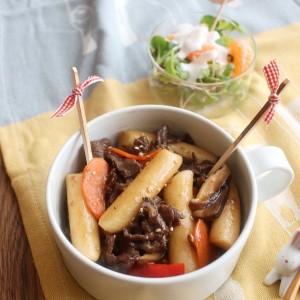 Royal Stir-fried Rice Cake4.96(141)
Royal Stir-fried Rice Cake4.96(141)
-